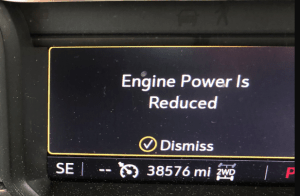The Ultimate Guide to Valve Stems Size Chart. Everything You Need to Know
Confused about valve stem sizes? Don’t worry, we’ve got you covered. In this comprehensive guide, we’ll go over everything you need to know about valve stem sizes, including what they are, why they matter, and how to find the right size for your vehicle.
If you’re a car enthusiast or a mechanic, you’re probably familiar with valve stems. These small but crucial components help to keep your tires inflated and your vehicle running smoothly. However, with so many different valve stem sizes on the market, it can be tough to figure out which one is right for your vehicle.
In this article, we’ll take a deep dive into valve stem sizes, answering all of your burning questions and giving you the information you need to choose the right valve stem for your vehicle. We’ll cover everything from what valve stems is to how to measure them, and we’ll even provide a helpful valve stems size chart to make things easier.
What are Valve Stems?
Before we dive into the world of valve stem sizes, let’s start with the basics. A valve stem is a small metal or rubber component that protrudes from the rim of your tire. Its primary function is to allow air to be added or removed from the tire, which helps to maintain the tire’s pressure and keep it properly inflated.
Valve stems come in a variety of shapes and sizes, depending on the type of tire and rim they’re designed to fit. In general, there are two main types of valve stems: tubeless and tube-type. Tubeless valve stems are used on tires that don’t require an inner tube, while tube-type valve stems are used on tires that do.
Why Do Valve Stem Sizes Matter?
Now that we know what valve stems are, let’s talk about why their size matters. When it comes to valve stems, size really does matter, as choosing the wrong size can lead to a variety of issues.
For starters, if your valve stem is too small, it may not seal properly with the rim, which can cause air leaks and result in underinflated tires. On the other hand, if your valve stem is too large, it may not fit into the valve hole on your rim, making it impossible to inflate your tire.
In addition to these issues, choosing the wrong valve stem size can also lead to uneven tire wear and poor handling, which can be dangerous while driving.
How to Measure Valve Stems
Now that we understand the importance of choosing the right valve stem size, let’s talk about how to measure valve stems. There are two main measurements you’ll need to take: the diameter of the valve stem and the length of the valve stem.
To measure the diameter of the valve stem, you’ll need a valve stem gauge, which can be purchased at any auto parts store. Simply insert the gauge into the valve stem and read the measurement on the gauge.
To measure the length of the valve stem, you’ll need a ruler or tape measure. Simply measure the length of the valve stem from the base (where it meets the rim) to the top of the valve cap.
Valve Stems Size Chart
To make things easier, we’ve put together a helpful valve stem size chart. This chart lists the most common valve stem sizes and their corresponding measurements, making it easy to find the right size for your vehicle.
| Valve Stem Size | Diameter (mm) |
|---|---|
| TR413 | 11.5 |
| TR414 | 11.5 |
| TR415 | 11.5 |
| TR418 | 11.5 |
| TR423 | 11.5 |
| TR600HP | 11.5 |
| TR602HP | 11.5 |
| TRJ650 | 11.5 |
| TRJ670 | 11.5 |
| TRJ-670-HP | 11.5 |
| VS-8 | 8 |
| VS-8H | 8 |
| VS-8HP | 8 |
| VS-10 | 10 |
| VS-101 | 10 |
| VS-102 | 10 |
| VS-105 | 10 |
| VS-106 | 10 |
| VS-107 | 10 |
| VS-109 | 10 |
Valve stem sizes can vary depending on the type of tire and rim you have, which is why it’s important to measure your valve stem before purchasing a replacement.
The valve stems size chart above includes some of the most common sizes, but it’s always a good idea to double-check your measurements to ensure you get the right size. Remember, choosing the wrong valve stem size can lead to a variety of issues, so take the time to measure your valve stem correctly.
How to Choose the Right Valve Stem
Now that you know how to measure valve stems and understand the importance of choosing the right size, let’s talk about how to choose the right valve stem for your vehicle.
When selecting a valve stem, there are a few factors to consider, including the type of tire you have, the type of rim you have, and the valve stem size. It’s important to choose a valve stem that is compatible with your tire and rim, and that is the correct size.
In addition to these factors, you may also want to consider the material of the valve stem. Valve stems can be made from metal or rubber, and each material has its own set of pros and cons. Metal valve stems are more durable and long-lasting, but they can be more expensive than rubber valve stems. Rubber valve stems are more affordable and easier to install, but they may not last as long as metal valve stems.
Conclusion
Valve stems may seem like a small and insignificant part of your vehicle, but they play a crucial role in maintaining tire pressure and ensuring safe driving. Choosing the right valve stem size is essential for proper tire inflation and handling, and can help prevent issues such as air leaks and uneven tire wear.
By following the tips and information provided in this article, you’ll be able to confidently choose the right valve stem for your vehicle, and enjoy a smooth and safe driving experience.
FAQs about Valve Stem Size Chart
- What is the most common valve stem size? The most common valve stem size is 8mm, followed by 10mm and 11.3mm.
- Can I use any valve stem size on my tire? No, it’s important to choose a valve stem that is compatible with your tire and rim. Using the wrong size can lead to issues such as air leaks and uneven tire wear.
- How do I measure the diameter of my valve stem? You can measure the diameter of your valve stem using a valve stem gauge, which can be purchased at any auto parts store.
- How do I measure the length of my valve stem? You can measure the length of your valve stem using a ruler or tape measure. Simply measure the length of the valve stem from the base (where it meets the rim) to the top of the valve cap.



